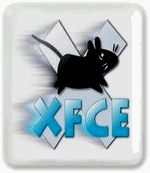Xfce: Difference between revisions
No edit summary |
|||
| (3 intermediate revisions by the same user not shown) | |||
| Line 26: | Line 26: | ||
Xfconf-query is a Command Line Interface (CLI) tool for accessing configuration data stored in Xfconf. For example you can use it to modify settings from files located in "~/.config/xfce4/xfconf/xfce-perchannel-xml." | Xfconf-query is a Command Line Interface (CLI) tool for accessing configuration data stored in Xfconf. For example you can use it to modify settings from files located in "~/.config/xfce4/xfconf/xfce-perchannel-xml." | ||
You want to use Xfconf-query rather than try to manually modify the xml files with another editor so that they will be retained after a system reboot. When Xfce starts, the settings are read into memory. Manual changes to the files with an external editor will be replaced with the data from memory when the user logs out (reboot) unless you use xfconf-query. | You want to use [http://docs.xfce.org/xfce/xfconf/xfconf-query Xfconf-query] rather than try to manually modify the xml files with another editor so that they will be retained after a system reboot. When Xfce starts, the settings are read into memory. Manual changes to the files with an external editor will be replaced with the data from memory when the user logs out (reboot) unless you use xfconf-query. | ||
xfconf-query -l | xfconf-query -l | ||
Will list all available configuration channels to the terminal running in X. You cannot do this from a remote text shell. | Will list all available configuration channels to the terminal running in X. You cannot do this from a remote text shell. | ||
| Line 63: | Line 63: | ||
Say I want to remove mplayer from the Application -> Multimedia menu. | Say I want to remove mplayer from the Application -> Multimedia menu. | ||
rm /usr/share/applications/mplayer.desktop | rm /usr/share/applications/mplayer.desktop | ||
Sometimes you might have to "xfdesktop --reload" | |||
'''EXAMPLE 1:''' Applications menu launcher for a specific user only. | |||
I created an xfce menu launcher for a shell script I wrote. I made it so the script appears in my login profile only in the xfce Applications menu. | |||
vi ~/.local/share/applications/togglexbindkeys.desktop | |||
Inside the togglexbindkeys.desktop file I entered the following code: | |||
[Desktop Entry] | |||
Version=1.0 | |||
Type=Application | |||
Name=Toggle Xbindkeys | |||
Exec=/home/mythbox/togglexbindkeys | |||
Icon= | |||
Categories=System;Video; | |||
The name is what appears in the menu. If I had an icon file I would have put the path to it under Icon= which would typically be a png file. | |||
==References and External Resources== | ==References and External Resources== | ||
Latest revision as of 19:08, 24 June 2015
XFCE - a lightweight and efficient Graphical Desktop environment for Linux/*nix XWindows (X.org).
Xfce is a desktop environment for Unix and other Unix-like platforms (such as Linux, Solaris or BSD). Xfce is "Designed for productivity. It loads and executes applications fast, while conserving system resources." (Olivier Fourdan). This philosophy should appeal to anyone looking for a fast, modern, and efficient working environment for a *NIX box.
 Learn more... |
Software / Apps for xfce
Image Viewers
- Ristretto - a lightweight image viewer. review: does not work. images partially load. stupid ui.
- Geequi - also knon as gqview. review: best little image viewer currently available. single click folder nav should be optional but isn't. installation: apt-get install gqview
Web Browsers
- Chromium
- Firefox
Utility
- Thunar File Manager
- KeyMon
Media
- MythTV
- VLC Media Player
HowTo
Modify Xfce settings using Xfconf-query
Xfconf-query is a Command Line Interface (CLI) tool for accessing configuration data stored in Xfconf. For example you can use it to modify settings from files located in "~/.config/xfce4/xfconf/xfce-perchannel-xml."
You want to use Xfconf-query rather than try to manually modify the xml files with another editor so that they will be retained after a system reboot. When Xfce starts, the settings are read into memory. Manual changes to the files with an external editor will be replaced with the data from memory when the user logs out (reboot) unless you use xfconf-query.
xfconf-query -l
Will list all available configuration channels to the terminal running in X. You cannot do this from a remote text shell.
Keyboard Menu shortcut
Assign a key with the Keyboard Settings -> Shortcuts to the command
xfdesktop -menu.
The menu will popup where the mouse cursor is at. You can also use
xfce4-popup-applicationsmenu
This will open the panel menu.
The so called "windows" button on modern keyboards is correctly called "The Superkey." This key is fully functional when using the GTK+ Toolkit version 2.10 or higher as advised by the Xfce Wiki.
Customize the keyboard layout and shortcut keys
Display all defined shortcut keys with this command:
xfconf-query -c xfce4-keyboard-shortcuts -l -v | cut -d'/' -f4 | awk '{printf "%30s", $2; print "\t" $1}' | sort | uniq
Both xfce4-xkb-plugin and setxkbmap can be used to change keyboard layouts. However, if all you want to do is customize shortcuts then you need to create your own theme.
Keyboard shortcuts are defined on two locations. The shortcuts to handle the window manager are defined in the following location:
- Settings Manager -> Window Manager Settings -> Keyboard
You cannot change the default theme so you need to add a new theme and customize it. (Taken from Xfce WikI, and Outdated!)
Global shortcuts: Multimedia Keys like volume, play disc, stop, rewind are defined in the following location: (Taken from Xfce WikI, and Outdated!)
- Settings Manager -> Keyboard Preferences -> Shortcuts
Keyboard layout configuration files that are part of Xfce are XML formatted files located in the following path:
~/.config/xfce4/xfconf/xfce-perchannel-xml/
Where xfce-perchannel-xml is a directory containing files such as: keyboard-layout.xml and keyboards.xml among others.
It's done by edit of the menu configuration files with an editor such as vi. Custom xfce menus can be located in places like: /etc/xdg/xdg-mythbuntu/menus
vi /etc/xdg/xdg-mythbuntu/menus/xfce-applications.menu
Say I want to remove mplayer from the Application -> Multimedia menu.
rm /usr/share/applications/mplayer.desktop
Sometimes you might have to "xfdesktop --reload"
EXAMPLE 1: Applications menu launcher for a specific user only.
I created an xfce menu launcher for a shell script I wrote. I made it so the script appears in my login profile only in the xfce Applications menu.
vi ~/.local/share/applications/togglexbindkeys.desktop
Inside the togglexbindkeys.desktop file I entered the following code:
[Desktop Entry] Version=1.0 Type=Application Name=Toggle Xbindkeys Exec=/home/mythbox/togglexbindkeys Icon= Categories=System;Video;
The name is what appears in the menu. If I had an icon file I would have put the path to it under Icon= which would typically be a png file.
References and External Resources
- Xfce Frequently asked questions (FAQ)
- Xfce Forum Topic: Multimedia key support in Xfce
- Hold down the SHIFT key so xev will give you the keycode to media keys
